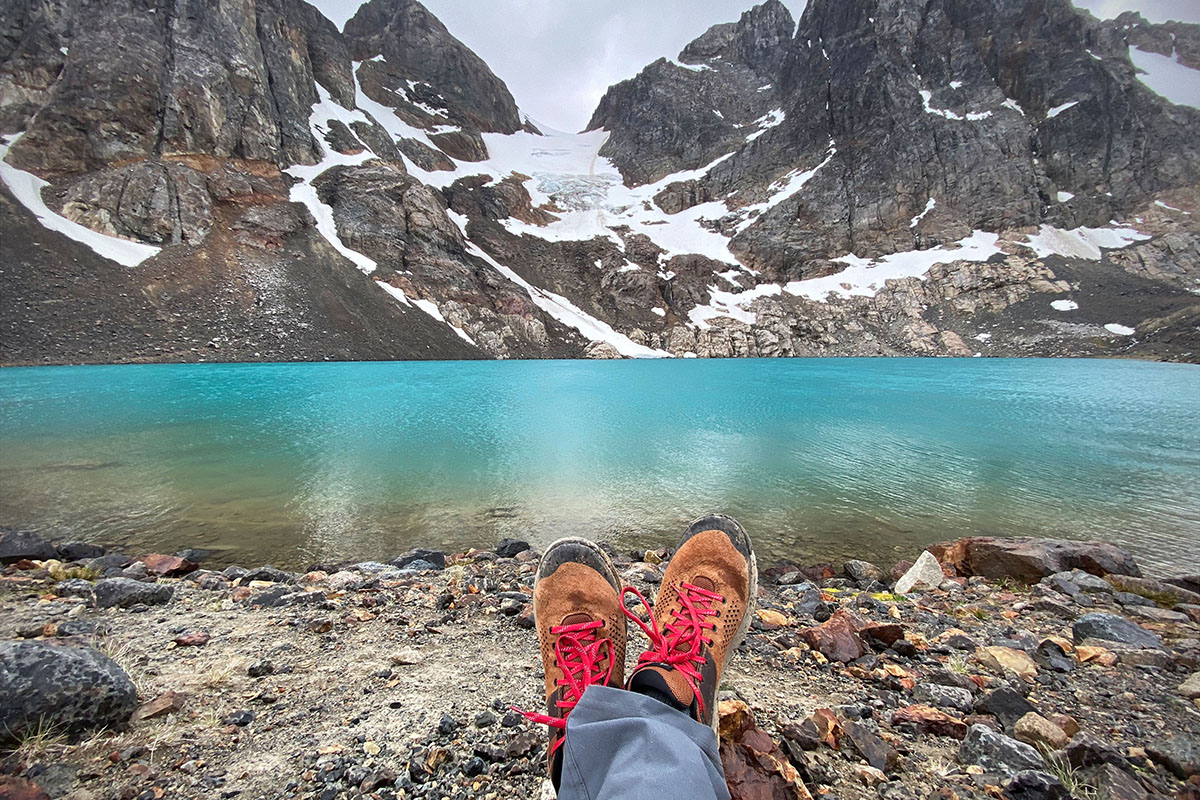
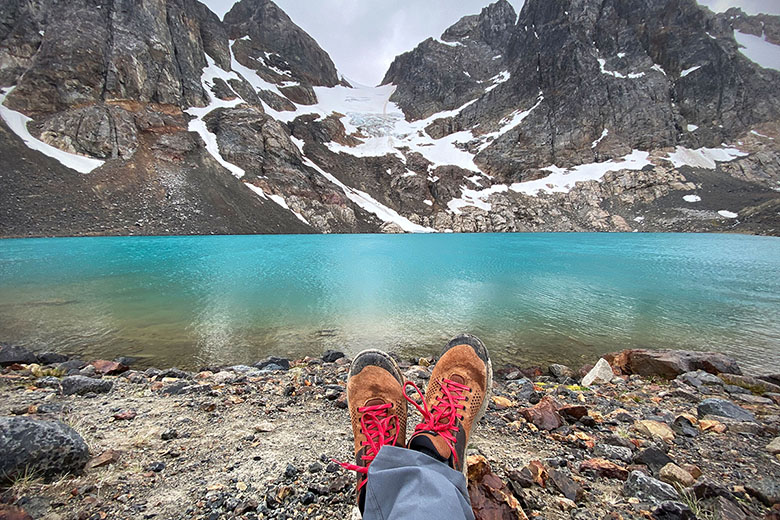
Switchback Travel


Switchback Travel
Price: $170
Weight: 1 lb. 8 oz. (men’s)
Waterproof: No (GTX available)
What we like: Light and nimble without sacrificing protection or traction.
What we don’t: Not the most stable or supportive shoe.
See the Men's Danner Trail 2650 See the Women's Danner Trail 2650
Better known for their lineup of tough leather boots, Danner offers an impressively well-rounded hiker in the Trail 2650. We took the low-top version of the shoe to Patagonia, where it faced long days, high mileage, and a lot of scrambling. The verdict: the Trail 2650 is surprisingly capable, combining the light weight and nimble feel of a trail runner with the traction and protection of a beefier design. It’s not the most stable or supportive option, but we came away pleased by its good looks and all-around performance. Below we detail our experiences with the Trail 2650. To see how it stacks up to the competition, see our article on the best hiking shoes.
Out of the box, we took the Danner Trail 2650 on a range of day hikes and an overnight backpacking trip on the Cerro Castillo Trek in Chilean Patagonia and came away impressed. On the trail, it was incredibly comfortable and almost tennis shoe-like in feel but with added traction and protection—an ideal combination for those who want to go fast and light. Part of this is due to the fact that the Trail 2650 utilizes leather around the upper, while many competitors use nylon and mesh. Leather has its downsides—it has a tendency to stretch, soaks up water more readily, and can be slightly less durable depending on the thickness—but the boost in comfort is worth these tradeoffs, in our opinion.
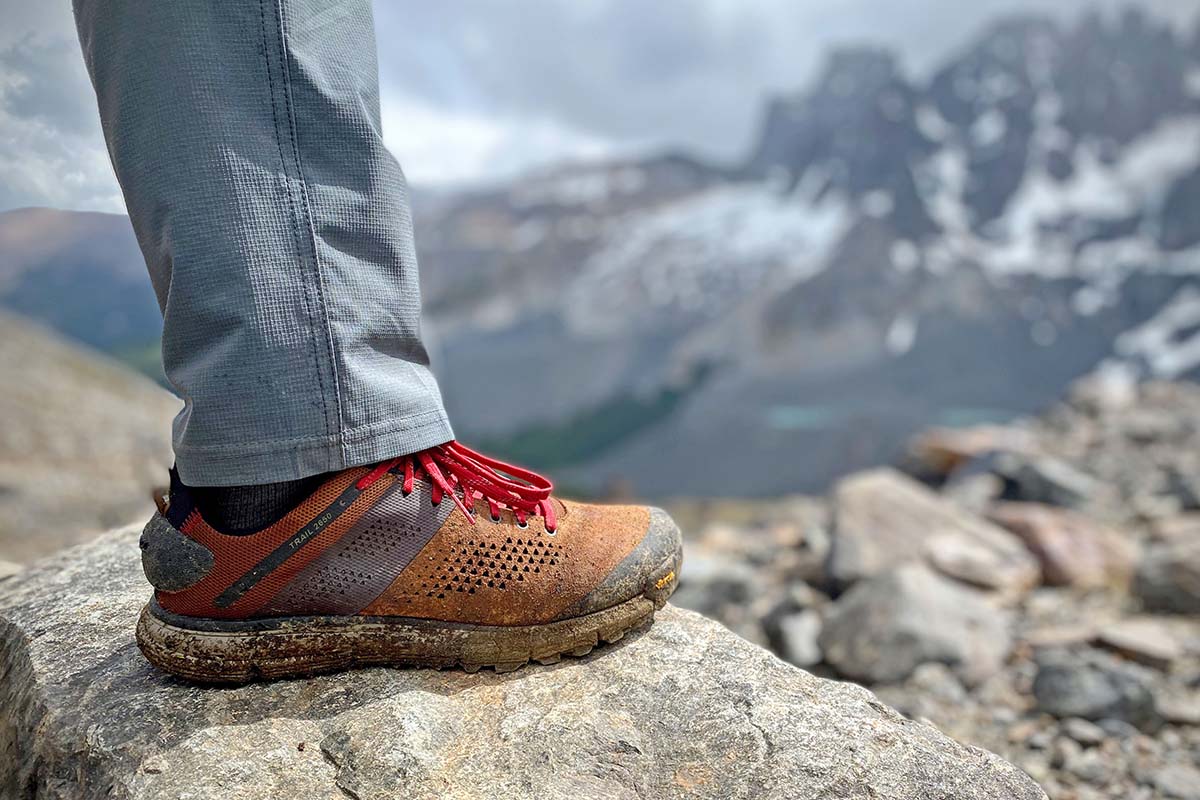
The shoes remained comfortable even when shuttling an overnight load, which was a pleasant surprise. On the Cerro Castillo Trek, after dropping our loaded packs at camp, we hiked up a dramatic and rough valley trail to Laguna Duff, much of which involved boulder-hopping in the rain and over otherwise unruly terrain. The shoes were well-cushioned, grippy, and totally capable even in those challenging conditions. Interestingly, the “2650” in the Trail's name references the total mileage of the Pacific Crest Trail, which alludes to the shoe's clear intentions. Although the Danner is unproven compared to many of its more established competitors, it’s nevertheless an intriguing thru-hiking option given its standout comfort while traveling fast and light.
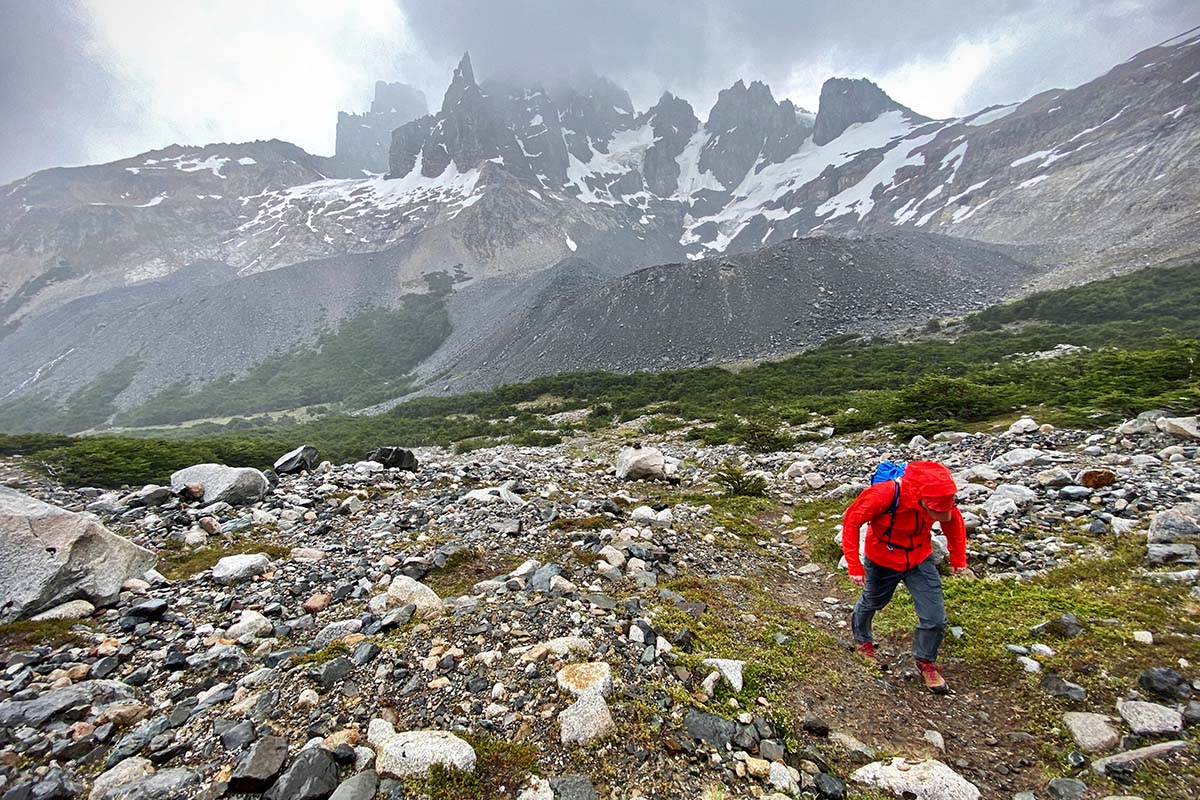
At 1 pound 8 ounces for the pair, the Danner Trail 2650 is decidedly on the lightweight end of the hiking shoe spectrum. On the trail, the shoe felt very agile but was still surprisingly capable of handling rough terrain with a loaded pack. For comparison, it weighs less than the uber-popular Salomon X Ultra 3 Low Aero (1 lb. 9.8 oz.), Merrell MQM Flex 2 (1 lb. 9 oz.), and Arc’teryx’s Aerios FL GTX (1 lb. 8.4 oz.), although the Aerios has a waterproof membrane that adds a bit of weight. Salomon’s X Raise Low (1 lb. 5.5 oz.) undercuts the Danner slightly, but all are extremely competitive given their on-trail chops. Even trail runners like the Brooks Cascadia 15 (1 lb. 7.4 oz.) and Altra Lone Peak 5 (1 lb. 6.2 oz.) aren’t that much lighter, and both of those shoes sacrifice protection and stability. All in all, the Danner strikes an excellent middle ground between weight and on-trail performance.
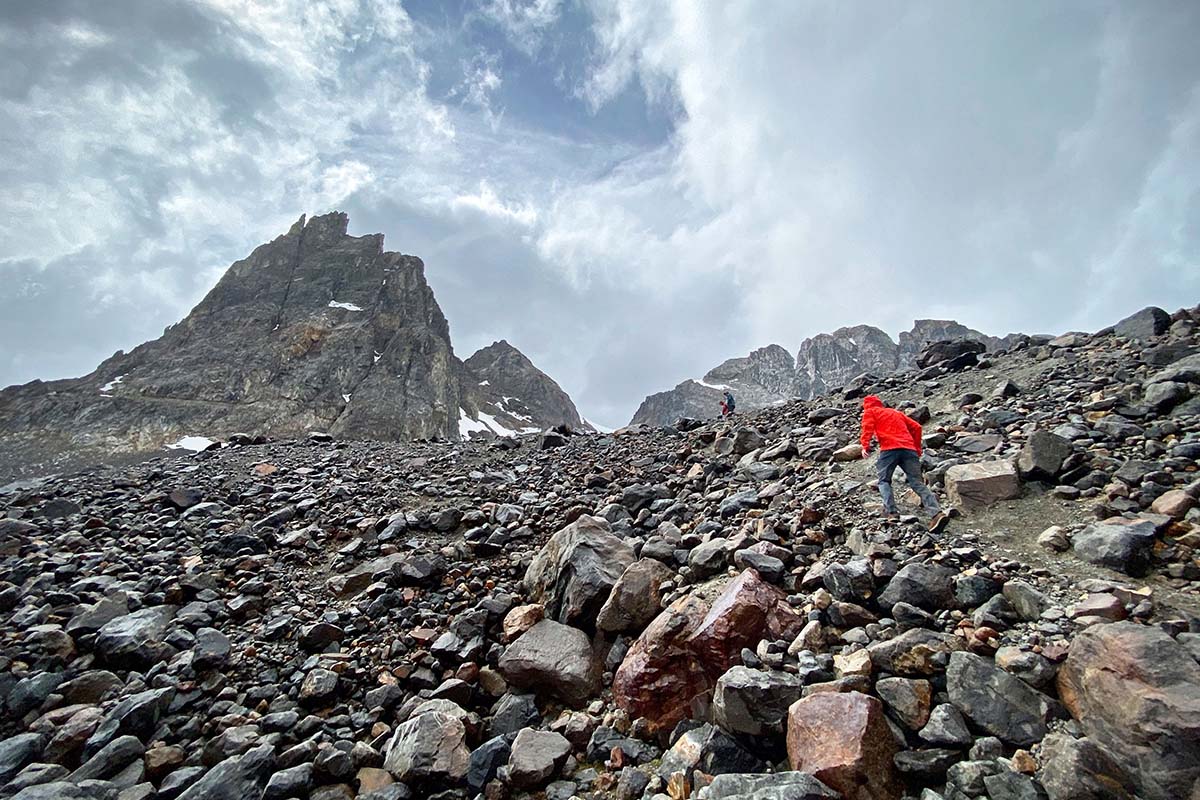
For such a lightweight trail shoe, the Danner Trail 2650 provides impressive grip across a wide variety of surfaces. I took the shoe on a particularly rocky, slippery, and sometimes off-trail route as part of the larger Cerro Castillo Trek, and it handled all of the terrain with ease. Despite a range of challenging conditions, I didn’t find myself looking for areas with more reliable footing, and the shoe’s Megagrip outsole and aggressive lug pattern inspired confidence while rock-hopping, even in rain and sleet. For reference, we also brought along the Salomon X Raise (which uses Salomon’s in-house Contagrip rubber), and that shoe fell well short from a traction perspective, turning skittish quickly on wet rock.
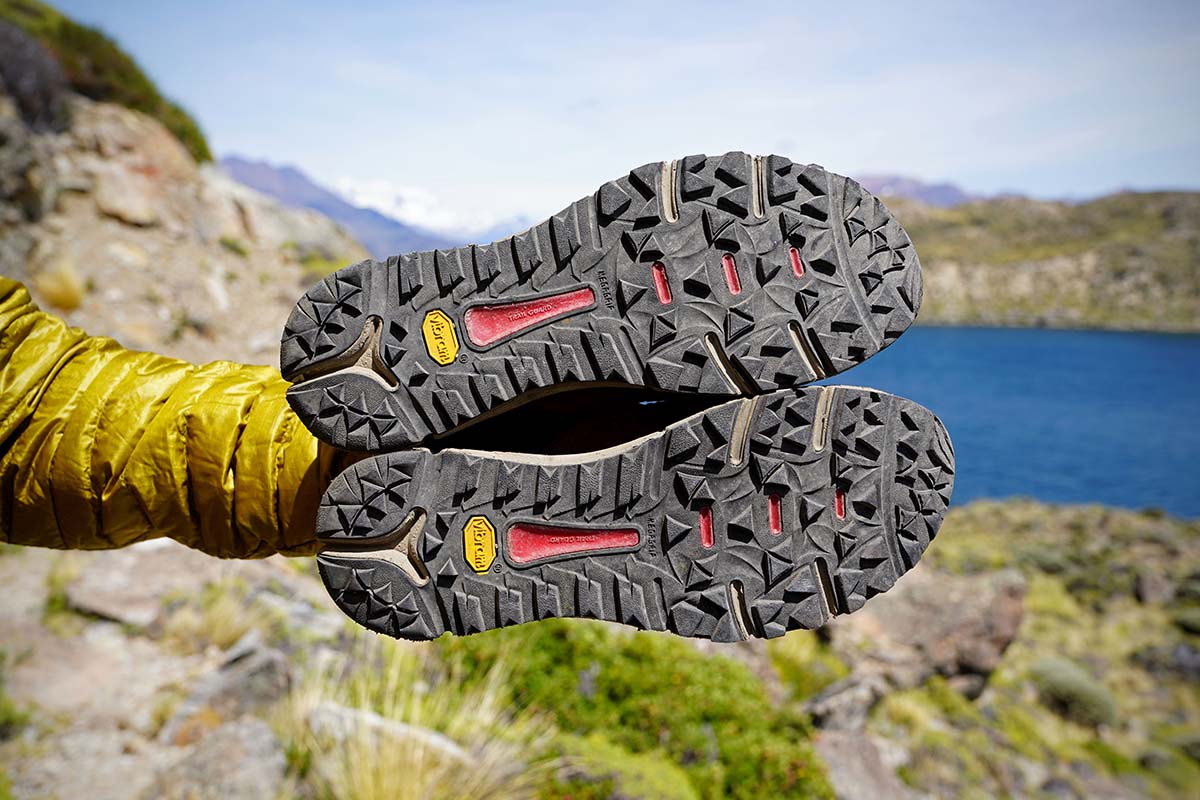
Put simply, if you’re looking for a lot of support, you won’t find it in the Danner Trail 2650. Low-top shoes (especially lightweight models) are inherently less stable than hiking boots, and the Danner is no exception. To be fair, we did wear an overnight pack and trek over especially tough, rocky terrain and experienced only slight ankle turns. But for those who prefer a supportive hiker, we would recommend stepping up to a model like the Keen Targhee III, Merrell Moab 2, or a higher-cut boot like the Salomon X Ultra 3 Mid.
When fully laced up, stability was good but not great. In general, leather shoes can be a bit tougher to tighten down, not to mention they have a tendency to stretch (a positive for comfort but a downside for stability). For comparison, we took the Arc’teryx Aerios GTX on a challenging trek into the Grand Canyon and found that it provided a notable bump in stability, and the Adidas Terrex Swift 2.0 was also standout in this regard (albeit with less stiffness). All in all, the Danner Trail 2650 is most at home on established trails and light scrambles, and it does make an intriguing thru-hiking option. However, it wouldn’t be my first choice for long days of scrambling or constant pounding on granite, as is common in the Pacific Northwest.
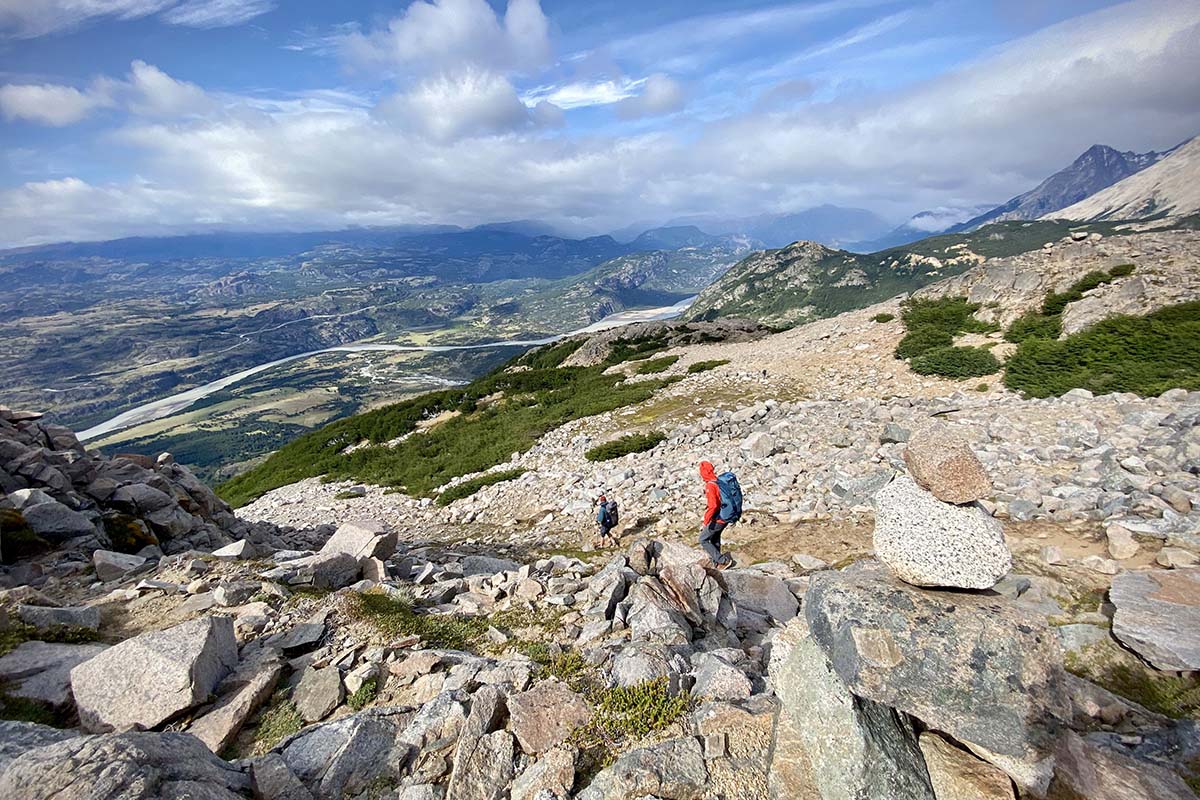
Protection is a clear strong suit of the Danner Trail 2650. For starters, the shoe offers excellent toe coverage with a generous patch of burly and stiff rubber around the front. While hiking, I stubbed my toe on rocks and roots multiple times without issue. Interestingly, the shoe also features a noticeably large piece of hard rubber at the heel. The jury is still out: It’s fairly uncommon that I pound my heel while hiking (certainly not nearly as much as my toes), and the bulky patch undoubtedly adds weight to the shoe’s overall build. That said, the added buffer did make me fearless with my heel placement when scrambling, which was a welcome bonus.
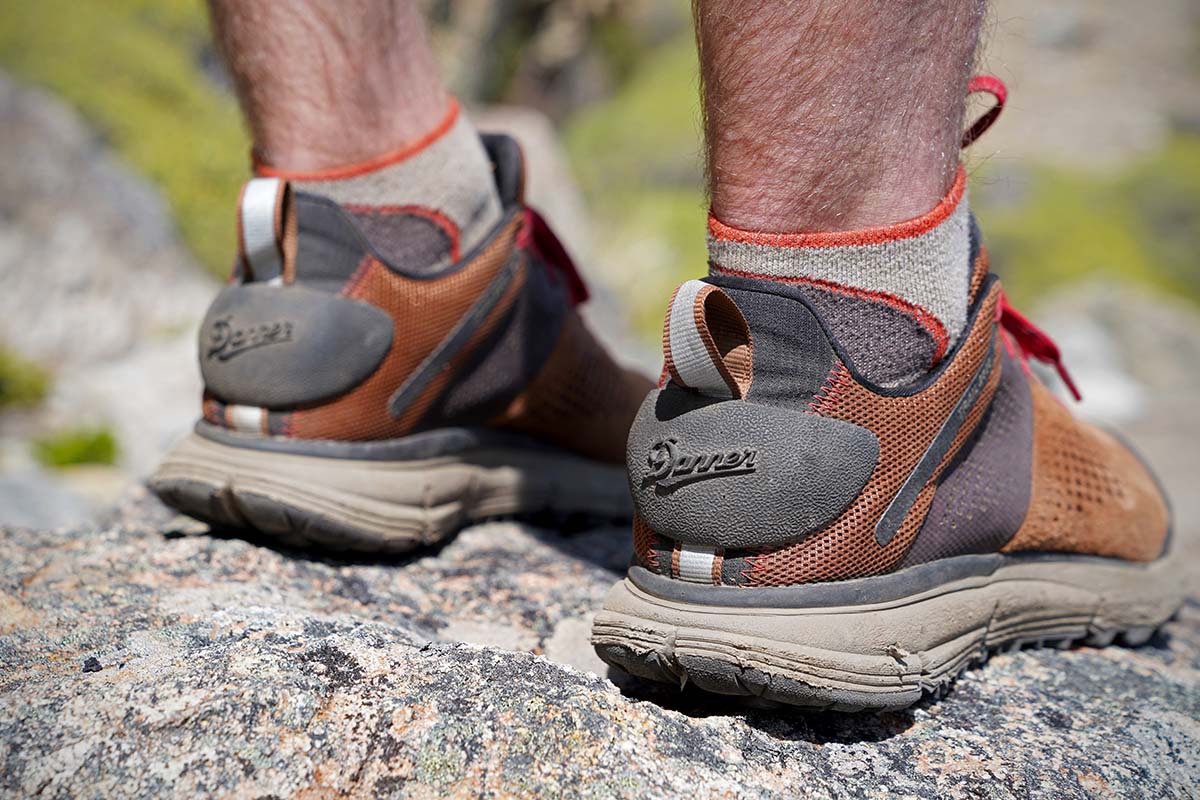
We tested the non-waterproof version of the Trail 2650, and Danner also makes a Gore-Tex model for $20 more and with a small, 1-ounce weight penalty. Choosing between waterproof and non-waterproof hiking shoes is ultimately a matter of personal preference (and we’ve written our own article on the topic here), and much of it depends on the location and specific conditions of your trek. On a longer, multi-day trip with a larger pack, I switched to the Danner Trail 2650 Mid GTX boots, which performed admirably in keeping my feet dry and remaining relatively breathable (as most Gore-Tex models do). But in the end, if you aren’t hiking in a moisture-prone area or have an easy way to dry your shoes quickly, the non-GTX model is both cheaper and lighter.
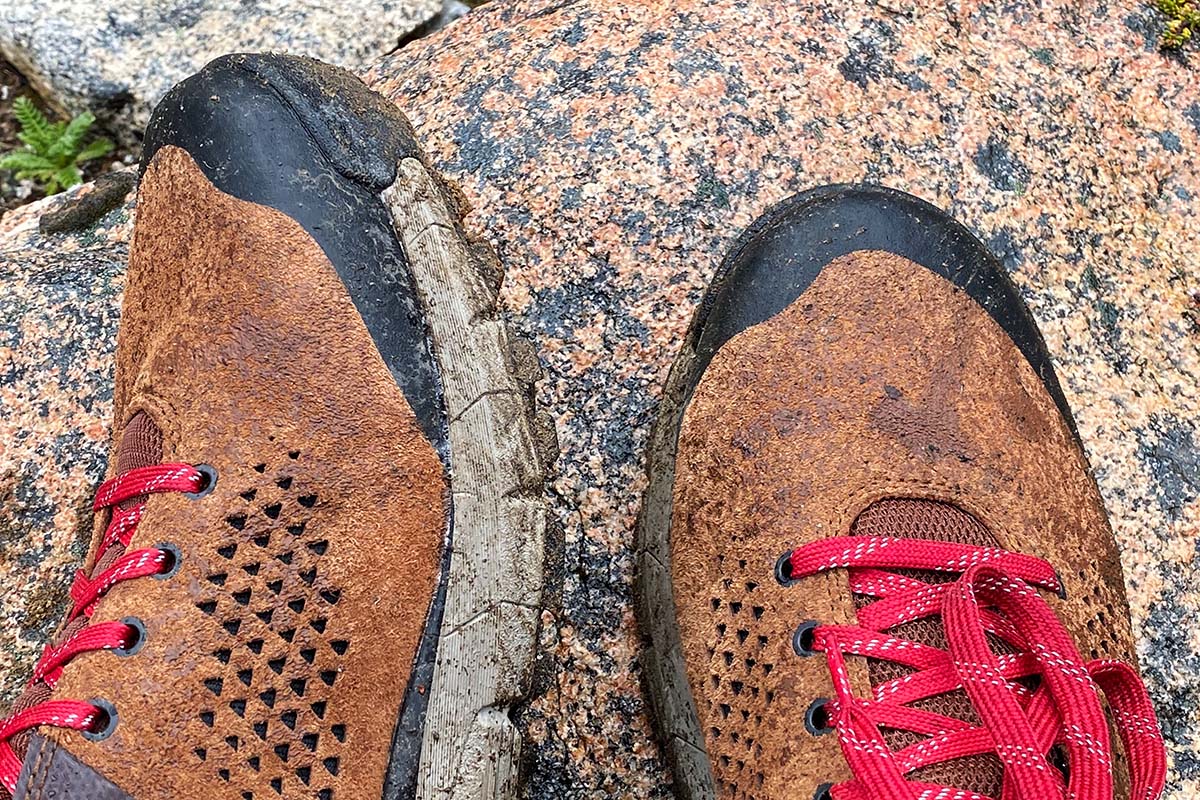
Out of the box, we had some concerns about long-term durability given the lightweight build of the Trail 2650. However, after putting on series mileage, the shoes have only minor scuffs and scratches. The rubber coating at the top of the toe is also starting to show signs of wear, but there are no major areas of concern yet. Some lightweight hikers sport uppers so thin that they scuff very easily, but the Danner’s leather upper has stood up surprisingly well to regular abuse, including quite a bit of scrambling. All in all, the Trail 2650 is a very well-built shoe, especially among competitors in its weight class.
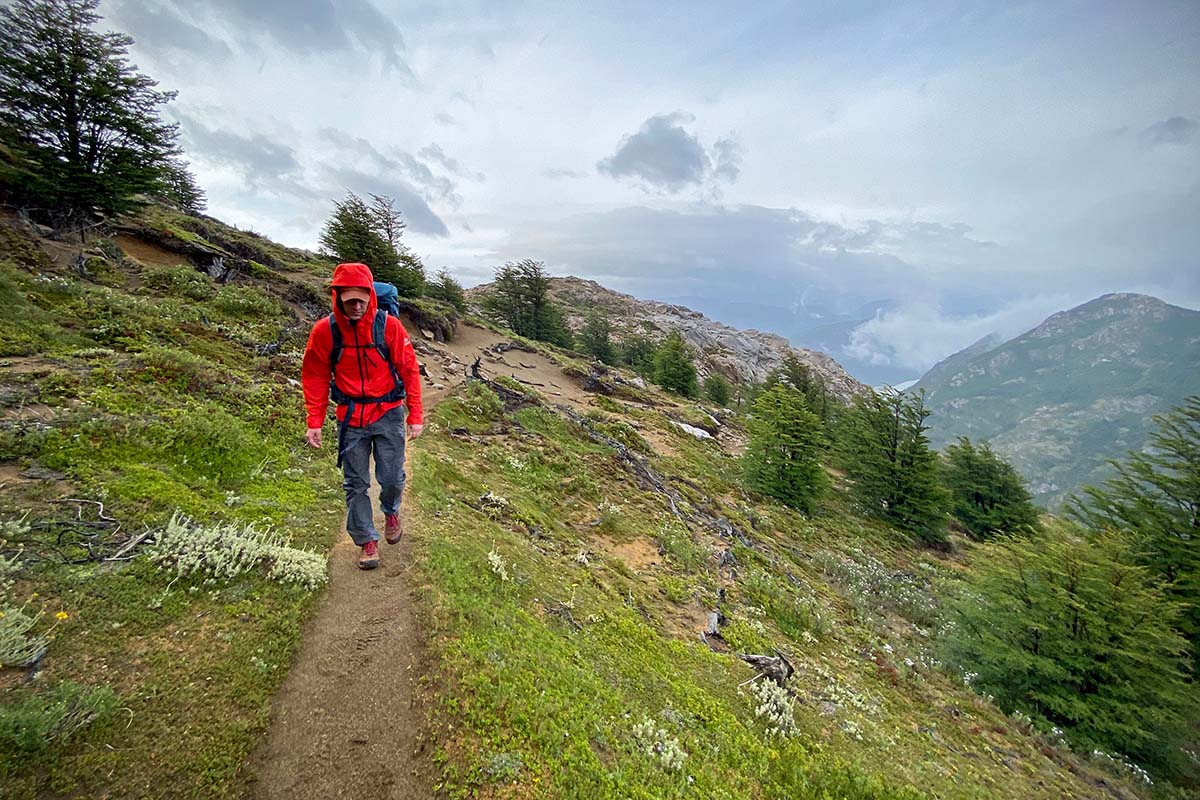
When it comes to fit, the Danner Trail 2650 runs slightly narrow. I have fairly average feet (on the wider side if anything) and ended up going with a “wide” version. This was unfortunate because the shoes proved to be too roomy for my feet, but the “regular” model was noticeably tight and uncomfortable (but keep in mind that the leather will eventually stretch). Further, it’s worth noting that the Danners also run a bit long, so I recommend sizing down if you’re on the fence (the boot version runs even longer). All in all, it wasn’t the most ideal fit for me, but those with narrower feet might have better luck. And a final (albeit small) gripe: The Trail 2650’s laces are far too long. When fully tightened and even double- or triple-knotted, they almost touch the ground.
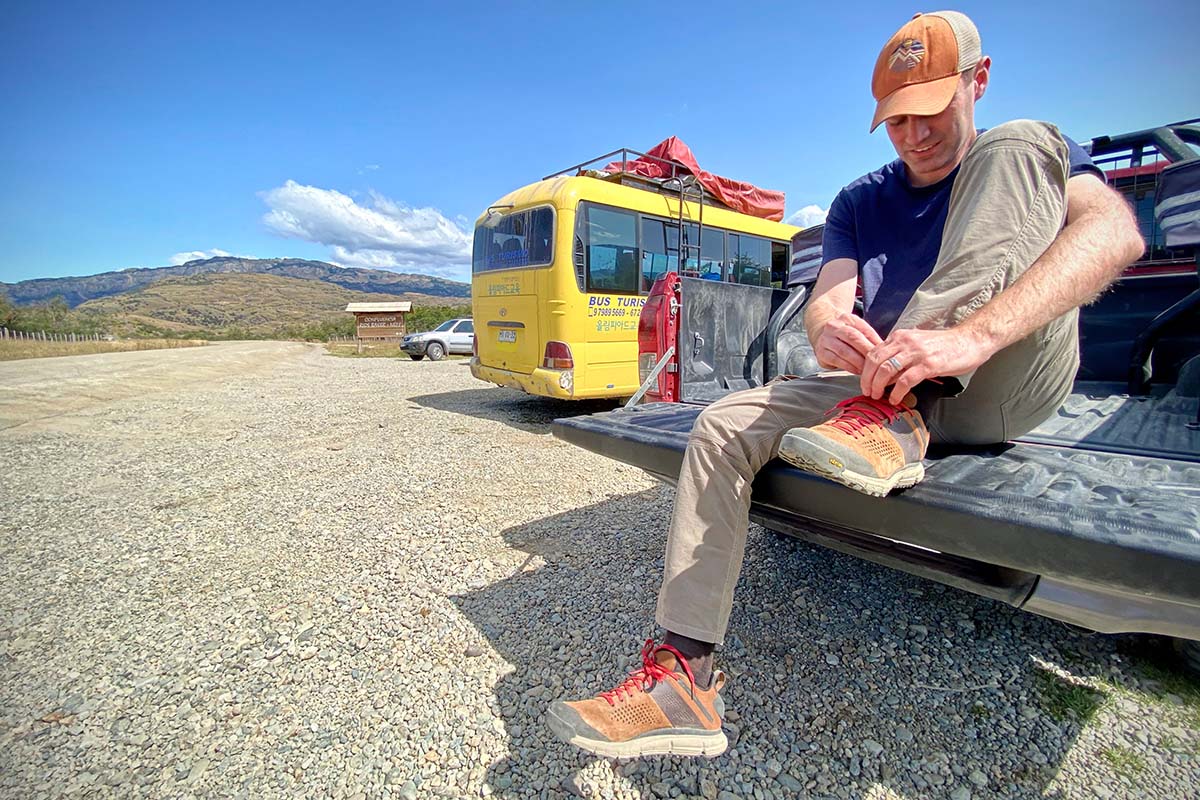
We brought the men’s low-top, non-waterproof Trail 2650 to Patagonia, and Danner makes a few of other variations of the design. The shoe we tested is also available in a women’s-specific version that costs the same at $170 and has an identical build and feature set but comes in different colorways and weighs less at 1 pound 2 ounces per pair. For those who hike in especially wet climates, the Trail 2650 GTX adds a waterproof membrane for $20 more and a 3-ounce weight penalty. Finally, Danner also came out with a waterproof Mid model of the Trail 2650 ($200). However, after testing the Mid GTX alongside the low-top shoe in Patagonia, we found that the boot felt notably sloppy and lacked support. Of all of the versions of the Trail 2650 available, we like the low-top version tested here best.
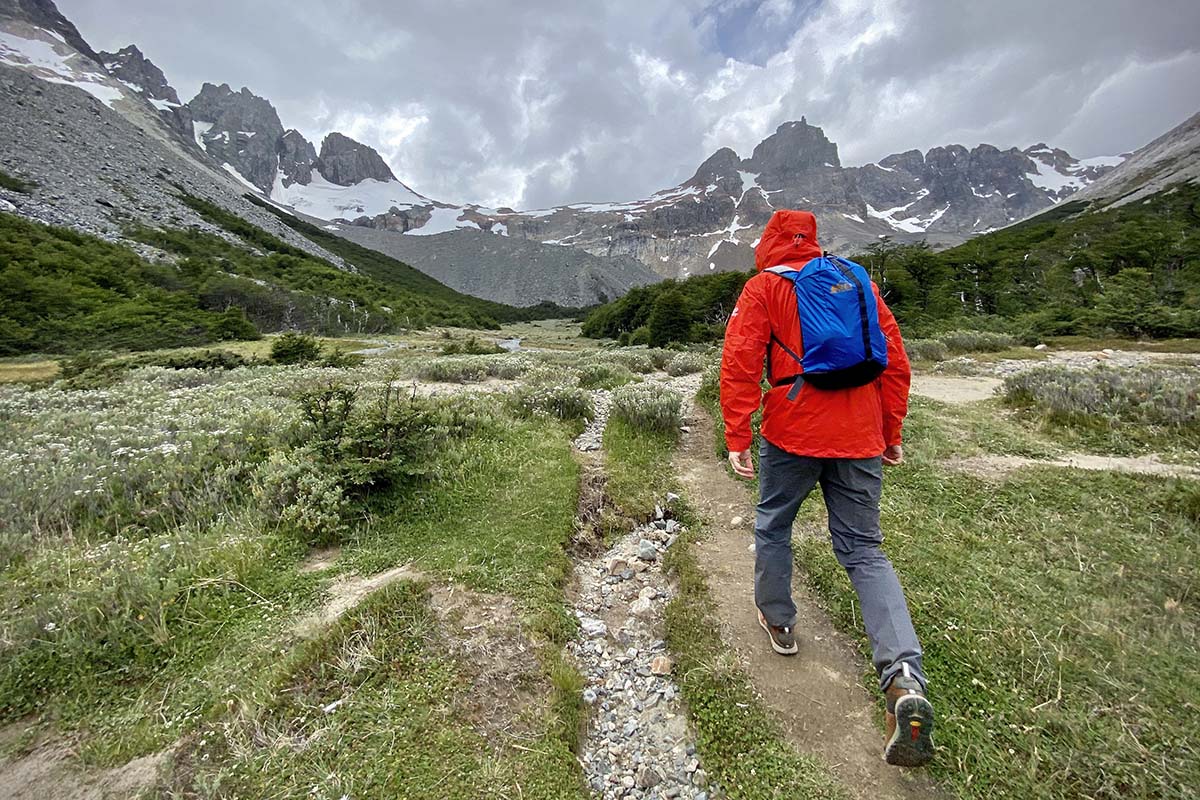
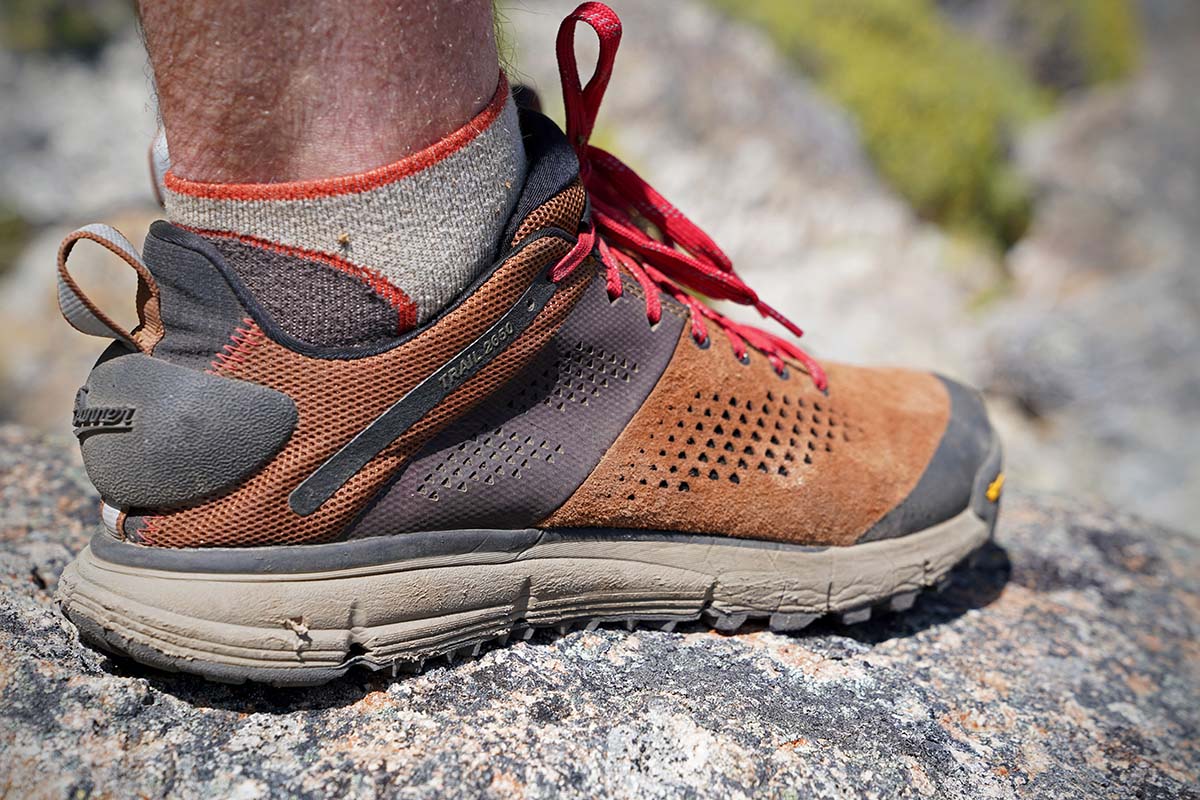
| Shoe | Price | Type | Weight | Waterproof | Upper |
|---|---|---|---|---|---|
| Danner Trail 2650 | $170 | Hiking shoe | 1 lb. 8 oz. | No (available) | Leather |
| Adidas Terrex Swift R2 | $140 | Hiking shoe | 1 lb. 8.6 oz. | Yes | Synthetic |
| Arc'teryx Aerios GTX | $180 | Hiking/trail running | 1 lb. 8.0 oz. | Yes | Synthetic |
| Oboz Sypes Low Leather WP | $155 | Hiking shoe | 1 lb. 15.4 oz. | Yes | Leather |
With its lightweight build and standout protection and comfort, the Danner Trail 2650 was a great match for our treks in Patagonia. Another low-top hiker to consider is the Adidas Terrex Swift R2 GTX. The Terrex Swift and Trail 2650 both feature lightweight builds (the Adidas is 0.6 oz. heavier at 1 lb. 8.6 oz.), but the Danner is much less stiff with its leather upper that adds a good dose of comfort (but again, leather does have a tendency to stretch and soak up water more readily). However, the Adidas wins out in support with a rigid design and stiff structure that lock the ankle in place. In practice, the Danner feels more like a tennis or trail-running shoe, while the Terrex Swift strikes us as a more substantial hiker, and a final decision will likely come down to trail feel. Note: the Terrex is no longer offered in a non-waterproof version, which could make a difference depending on your needs.
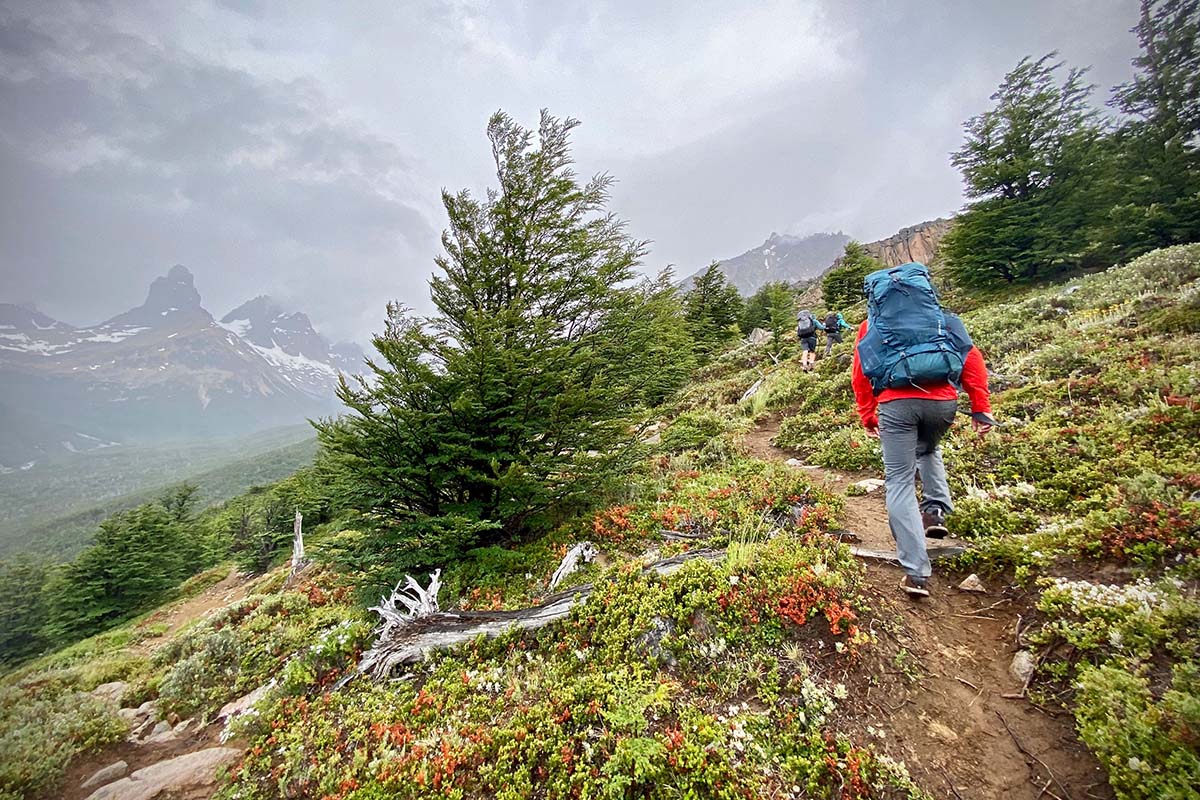
Arc’teryx threw its hat into the hiking footwear ring with the Aerios GTX. Compared to the Danner Trail 2650, the Arc’teryx has a similar lightweight build (1 lb. 8.4 oz.), but it’s stiffer and not as comfortable out of the box (it has more of an approach shoe-like feel). The Aerios also features a synthetic upper (compared to the Danner’s leather upper), which is sufficiently tough but offers a tighter fit and a bit more stability and support. All in all, both are capable options for day hiking and minimalist backpacking, and they also look great for around-town use. However, the Trail 2650 is $20 cheaper and comes in both Gore-Tex and non-Gore-Tex versions (the Aerios is only available in GTX), which gives it the slight edge for us.
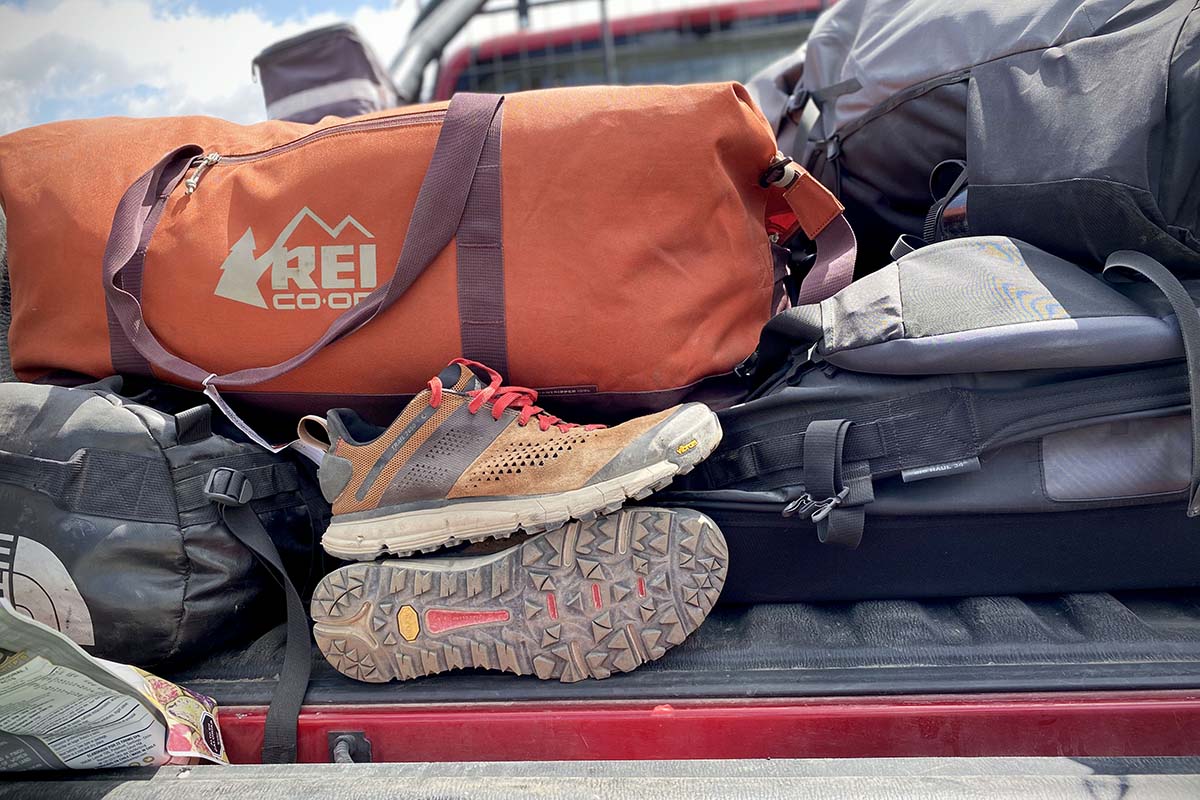
Another waterproof-only model to consider is Oboz’s new Sypes Low Leather WP. Like the Trail 2650, the Sypes is a decidedly modern and good-looking shoe with a great deal of everyday appeal. We especially like the sleek and streamlined leather upper, and the shoe offers adequate support, stability, and traction for most on-trail adventures. Where the Oboz starts to suffer, however, is when the terrain gets technical. In short, the Sypes lacks the cushioning and comfort needed for long days of hiking, and the Danner gets the clear edge in outright protection. Overall, unless you prefer the Oboz’s fit, we’d go with the lighter and more capable Trail 2650.
If you’re thinking about buying gear that we’ve reviewed on Switchback Travel, you can help support us in the process. Just click on any of the seller links above, and if you make a purchase, we receive a small percentage of the transaction. The cost of the product is the same to you but this helps us continue to test and write about outdoor gear. Thanks and we appreciate your support!
Depending on the seller, most products ship free in the United States on orders of $50 or more. International shipping availability and rates vary by seller. The pricing information on this page is updated hourly but we are not responsible for inaccuracies.